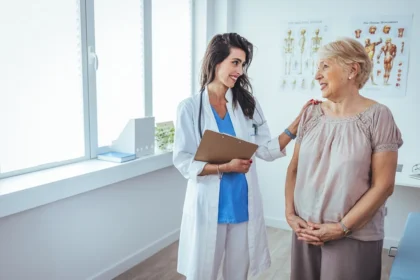Varicose veins affect many individuals, appearing as twisted, enlarged veins visible beneath the skin’s surface. These enlarged veins can cause discomfort and cosmetic issues. Understanding the causes, symptoms, and available treatment options enables individuals to make informed decisions about their vascular health. Here is more information on this condition and the medical specialists who provide treatment:
What Are Varicose Veins?
Varicose veins are enlarged, twisted veins that typically appear dark blue or purple beneath the skin. They occur when the walls of the veins weaken and the valves inside the veins fail to function properly. This valve dysfunction allows blood to pool in the veins rather than flow efficiently back to the heart.
The condition most commonly affects the legs and feet, where veins must work against gravity to return blood to the heart. Varicose veins can range from small spider veins to large, bulging vessels that protrude from the skin’s surface. While some people view them primarily as a cosmetic concern, this condition can also cause significant physical discomfort and complications if left untreated.
What Causes Them?
Several factors contribute to the development of this condition. Age plays a significant role, as vein walls naturally lose elasticity over time, and valves may become less effective at preventing blood backflow. Genetics also influences varicose vein development, with individuals having a higher risk if family members have experienced the condition.
Pregnancy increases the likelihood of developing this condition due to hormonal changes and increased blood volume that puts additional pressure on the venous system. Prolonged standing or sitting can contribute to the formation of these veins by increasing pressure in the leg veins. Excess weight can also strain the venous system by increasing pressure on the veins in the legs and pelvis.
What Are the Symptoms?
Varicose veins present with various symptoms beyond their visible appearance. Individuals may experience aching, burning, or throbbing pain in their legs, especially after prolonged periods of standing or sitting. The discomfort often worsens throughout the day and may improve with leg elevation or movement.
Swelling in the lower legs and ankles is a common symptom of this condition. This swelling, known as edema, results from fluid accumulation when blood pools in the affected veins. Other symptoms include leg heaviness, muscle cramping, and itching around the affected veins. In advanced cases, skin changes may occur, including discoloration, inflammation, or the development of ulcers near the affected veins.
Who Do You See for Treatment?
Vascular specialists provide comprehensive evaluation and treatment for this condition. These medical professionals specialize in diagnosing and treating conditions that affect the circulatory system, including those involving veins and arteries. A vascular specialist can assess the severity of varicose veins and recommend appropriate treatment options based on individual circumstances.
These specialists offer a range of treatment modalities for this condition. Venaseal™ is a minimally invasive procedure that uses medical adhesive to seal affected veins, redirecting blood flow to healthy veins. Sclerotherapy involves injecting a solution into the varicose vein that causes it to collapse and fade over time.
Radiofrequency vein ablation uses heat energy to close problematic veins. Phlebectomy involves the surgical removal of varicose veins through small incisions. The choice of treatment depends on factors such as vein size, location, and patient preferences.
See a Vascular Specialist Now
Varicose veins are a common vascular condition that can cause both cosmetic issues and physical discomfort. Understanding the causes and symptoms helps individuals recognize when professional evaluation may be beneficial. If you’re experiencing symptoms, schedule a consultation with a vascular specialist to discuss your treatment options and develop an appropriate management plan.









